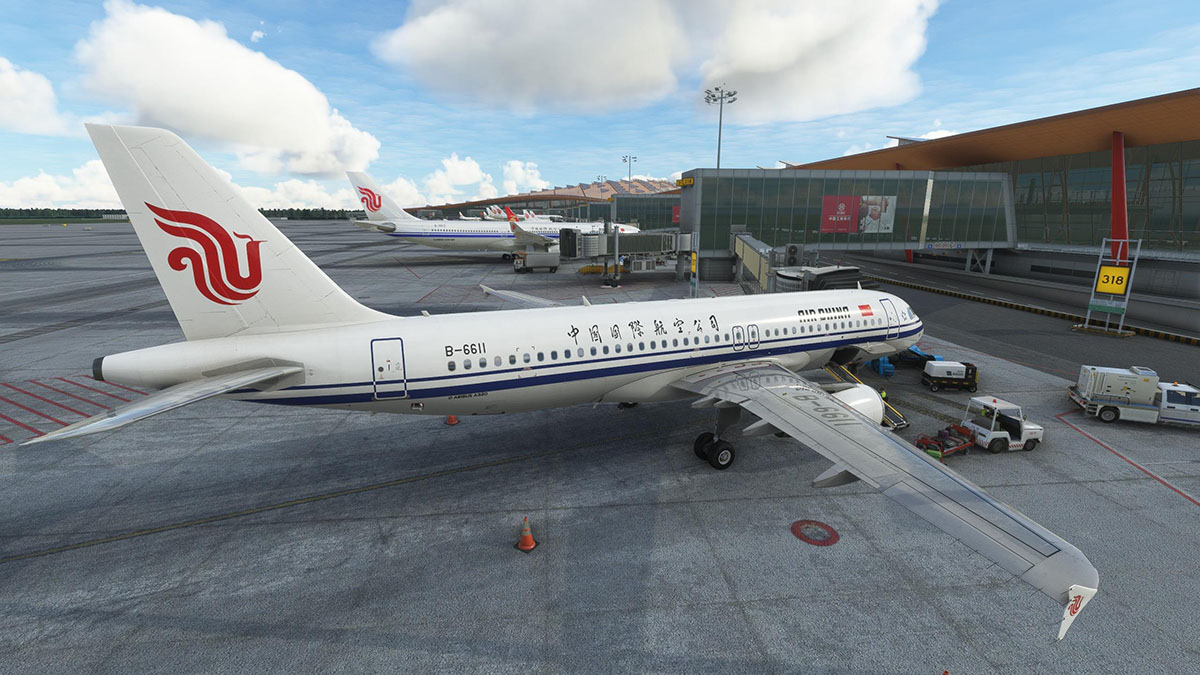Third-party developer WF Scenery Studio recently released Beijing Capital International Airport (ZBAA) for Microsoft Flight Simulator.
As the primary airport serving the capital of China, and one of the most relevant in the world in terms of passenger traffic, this is the perfect base if you want to simulate airliner flights in the country. It’s also a good destination for VIP flights with business jets and it plays host to some cargo traffic, offering great variety.
It can be purchased on SimMarket for $24.32 plus applicable VAT, and it can be installed and updated via the store’s own client, which isn’t the best in its category, but it’s workable.
If you’d like an extensive look at the scenery, you can watch an ILS approach and landing on runway 36R in the first video below, and a full flyover in a variety of lighting and weather conditions in the second video.
Do keep in mind that the airliners you see in the videos aren’t part of the scenery (they come from a couple of third-party AI solutions) as Beijing airport does not include static aircraft.
Incidentally, the airport works well with AI traffic, which is laudable considering how big it is and the complex layout of the taxiways. The only small issue is that – as far as I could see – parking codes for airlines have not been assigned to the gates, so you’ll see aircraft parking pretty much randomly at the three terminals, while they serve different groups of airlines in the real world.
While SIDs and STARs work correctly, there is an issue with the ILS approaches. The localizers appear to be shifted to the side by a few meters, prompting you to land on the grass if you don’t manually correct your track. This appears to be not entirely the developer’s fault, as it’s an issue I’ve noticed to be common to many airports in China when default Microsoft Flight Simulator navigation data is used. It can be corrected manually, but it’s often overlooked by third-party developers.
If you use Navigraph data, the problem disappears. The video above is recorded with Fenix’s Airbus A320 with the latest Navigraph data and the localizer is correctly set on the runway centerline.
The PAPI lights are correctly calibrated for visual landings, and all the ground services work with no issues.
Taxiways and ramps are also appropriately labeled according to the charts, so you won’t have issues navigating between the airport’s hundreds of gates and the runways.
The orthophoto used as the base of the airport is adequate and terraforming has been performed to correctly represent the depth of service roads and transportation railways. The only small issue is the green texture used where said roads and railroads intersect the taxiways, which doesn’t match the orthophoto perfectly. Yet, it’s very difficult to notice from the flight deck.
The texturing of the runways and taxiways is very well done, with great weathering, a high level of detail, and a realistic representation of the different materials compared to the photographic sources I could find.
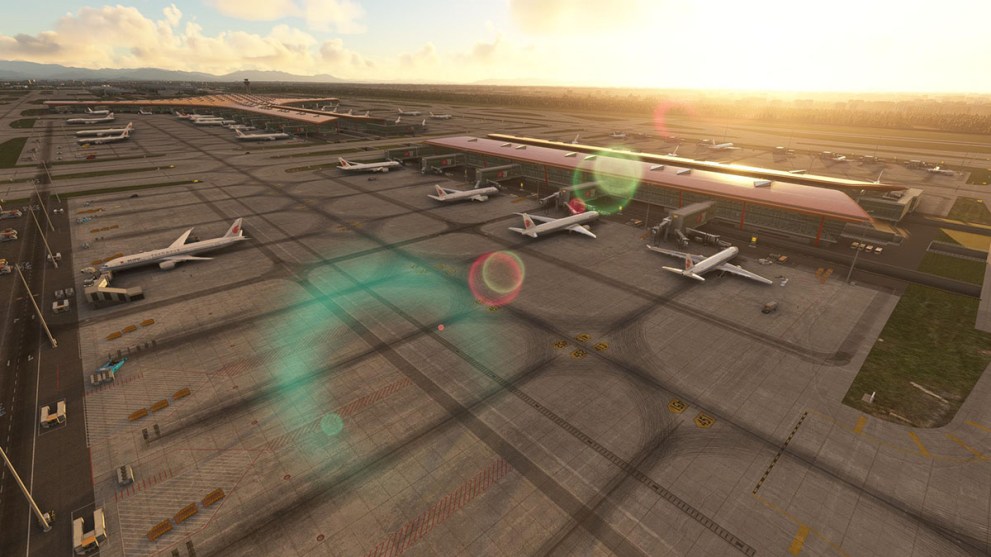
The markings are also precisely reproduced according to the charts and real-world sources, and they’re portrayed with just the right balance of crispiness and realism, without looking either too faded or cartoony.
The modeling of the terminal buildings is really top-notch, with fantastic attention to detail. The unique architecture and materials are perfectly reproduced with great weathering and skillful use of physically-based rendering.
The large glass areas that contribute to forming Terminal 3’s iconic looks have just the right opacity to look realistic, and each terminal is modeled with lots of care, including Terminals 1 and 2 which have not been overlooked despite being smaller and drawing less attention.
The jetways are fully custom and beautifully modeled, including billboards and signage, and the level of detail on the aprons around the gates is very high.
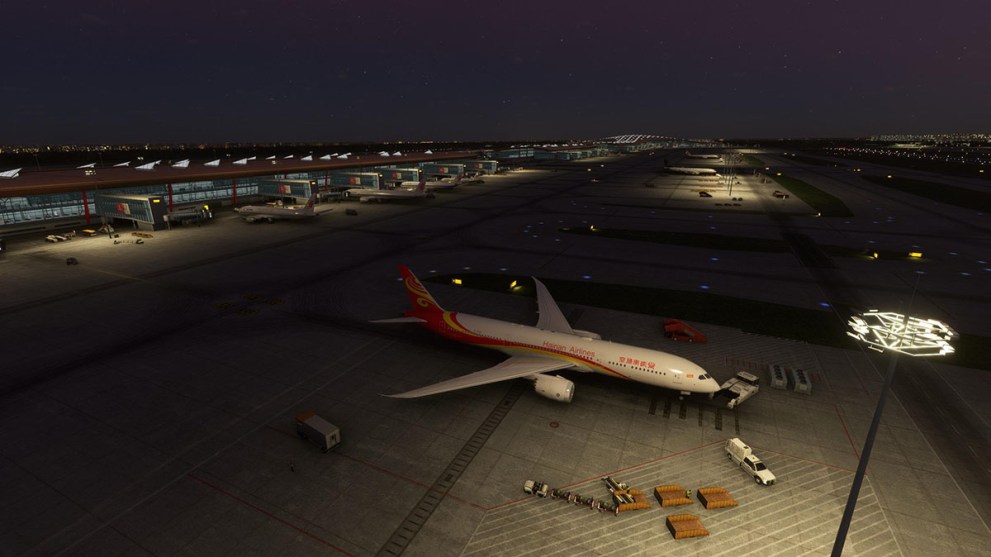
All terminals have modeled interiors that can be explored, with terminal 3 taking the lion’s share of the details and looking really spectacular, while the other two terminals still have adequate indoor areas.
Moving away from the terminals, all the buildings in the landside area including the towers and many hangars, on top of the VIP terminal features good models and textures, with very few weak points.
The same great level of detail can be found in the landside areas, which are often neglected in airports of this size. This includes access roads, parking locations, and even train tracks with animated trains.
The developer went above and beyond the call of duty by modeling a lot of surrounding offices and apartment buildings, and the whole area of the airport is fenced (actually double-fenced) which is in itself a rare treat in large hubs.

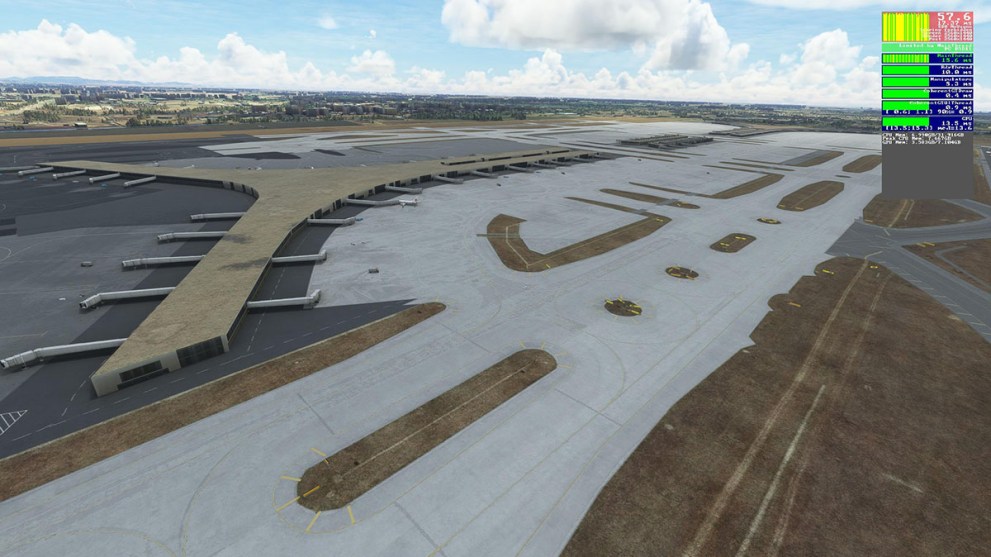
The default version of the airport in Microsoft Flight Simulator, like basically everything in China, is extremely bad, barely usable, and basically unrecognizable, as you can see in the comparison pictures above. The difference in detail added by the scenery by WF Scenery Studio is absolutely massive, so you would expect a large performance hit.
This is not the case, as the developer actually did great optimization work. On my PC (RTX 3070, Ryzen 9 3900x, 32 GB RAM) at 1440p resolution and ultra graphics settings, I had good performance even with advanced aircraft and full AI traffic simulation, losing only about 10 FPS compared to the default scenery, which is very impressive and frankly unexpected.
Night lighting is well-done across the board, both inside and outside of the terminals, with well-lit aprons, taxiways, and runways.
The reaction to the weather is a bit more spotty. Snow coverage is not terrible but not perfect either, with some of the usual patchwork that unfortunately appears to be mostly caused by limitations within Microsoft Flight Simulator for now. It also snows inside, which is always a bit amusing to see.
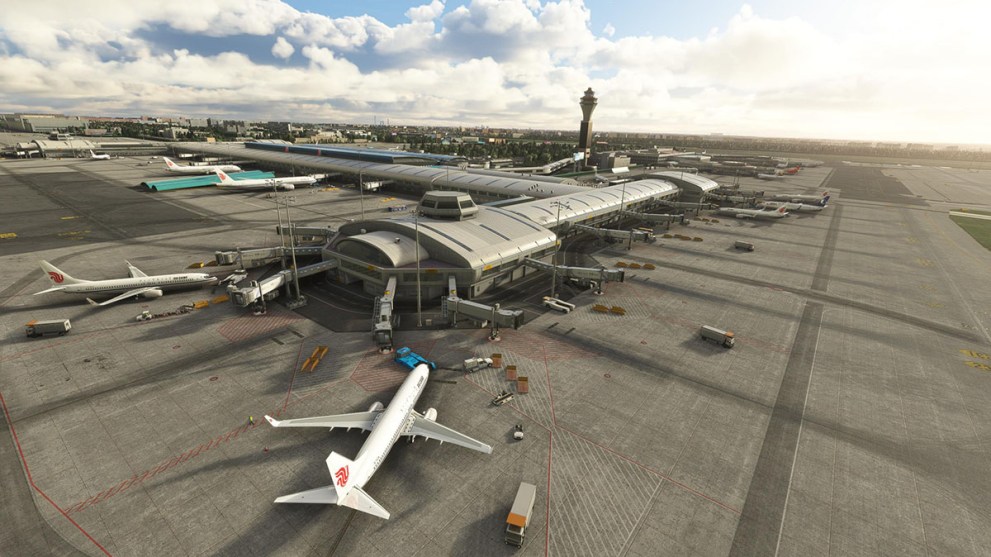
While most textures react well to the rain, there are areas of the ground that don’t get wet at all. These are fairly small and focused where the taxiways cross the road and railway underpasses, but they can be slightly disturbing.
Yet, these small flaws are basically negligible if you look at the overall quality of this airport in nearly all of its aspects.
It’s another fantastic piece of work by WF Scenery Studio, that proved once more that it can create some of the best airports for Microsoft Flight Simulator.
If you like to fly in China, like pretty much every other scenery add-on released by this specific developer, Beijing Capital Airport is a very easy recommendation.
Pros
Cons
Snow and rain implementation isn’t perfect.
